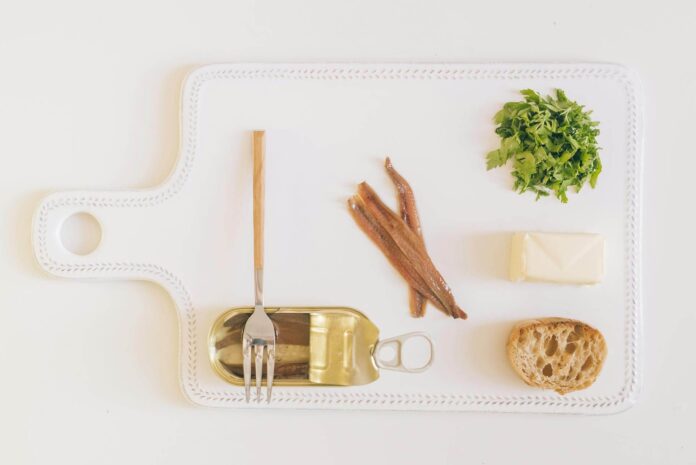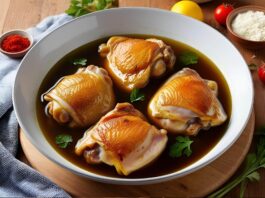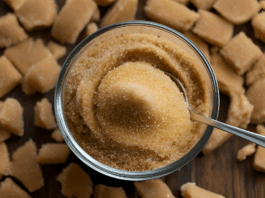Understanding how anchovies are typically preserved opens a window into the culinary traditions that keep these small yet flavorful fish at the heart of so many dishes. Anchovies have long been cherished across the globe, not just for their rich umami taste but for their versatility in the kitchen.
Whether enhancing the depth of a pasta sauce, lending a savory punch to a Caesar salad, or serving as the star ingredient atop a classic pizza, anchovies hold a special place in countless cuisines.
These delicate fish, however, are highly perishable, which makes preserving them essential for year-round enjoyment. The preservation methods used are not merely functional; they’re transformative, enriching the anchovies’ natural flavors while ensuring their quality remains intact.
By exploring how anchovies are typically preserved, we gain a deeper appreciation for the techniques that turn this fragile seafood into a pantry staple and culinary powerhouse.
Why Preserve Anchovies?
Preservation isn’t just about extending the shelf life of anchovies; it’s also about enhancing their flavor. Anchovies are highly perishable due to their small size and high-fat content, which makes them prone to spoilage if not handled promptly.
By preserving them, we not only prevent waste but also create a versatile product that’s easier to transport and use in various dishes.
Traditional Methods: Salting and Curing
One of the oldest and most common methods of preserving anchovies is salting. This method not only keeps the fish fresh but also intensifies their unique flavor.
The Salting Process
- Cleaning and Gutting: Freshly caught anchovies are quickly cleaned to remove impurities and prevent spoilage.
- Layering with Salt: The fish are layered in barrels or tubs with coarse sea salt. This draws out moisture, creating an environment unsuitable for bacterial growth.
- Aging: The salted anchovies are left to mature for several months. During this time, the salt penetrates the flesh, developing a deep, savory taste.
Advantages of Salting
- Enhances the natural umami flavor of the fish.
- Extends shelf life without refrigeration.
- Creates a concentrated product ideal for cooking.
Oil Packing: A Modern Favorite
In addition to salting, anchovies are often preserved in oil, a method that provides a more convenient product for immediate use.
How Anchovies Are Packed in Oil
- Deboning and Filleting: After salting, the anchovies are deboned and filleted to make them ready-to-eat.
- Rinsing: Excess salt is washed off to balance the flavor.
- Immersion in Oil: The fillets are submerged in olive oil, which prevents oxidation and keeps them moist.
Benefits of Oil Packing
- Ready-to-use straight from the jar or can.
- Softer texture compared to purely salted anchovies.
- A more balanced flavor profile suitable for various dishes.
Fermentation
Fermentation is another method used to preserve anchovies, particularly in Southeast Asian cuisines. This technique transforms anchovies into products like fish sauce or paste.
The Fermentation Process
- Mixing with Salt: Anchovies are combined with salt in large vats.
- Natural Fermentation: The mixture is left to ferment for several months, during which enzymes and bacteria break down the fish into a liquid or paste.
- Straining and Bottling: The resulting fish sauce or paste is strained and bottled, ready for use.
Culinary Uses
- Fish sauce serves as a cornerstone in dishes like Thai curries and Vietnamese pho.
- Fermented anchovy paste is a popular seasoning in Mediterranean recipes.
How Anchovies Are Typically Preserved for Culinary Excellence
Understanding how anchovies are typically preserved allows chefs and home cooks alike to appreciate the techniques behind these tiny, flavorful fish. Whether salted, oil-packed, or fermented, each method offers unique flavors and textures that enhance countless dishes.
The preservation process not only ensures availability but also adds to the rich culinary traditions associated with anchovies. Next time you enjoy a Caesar salad or a pasta puttanesca, you’ll know the care and craft behind the anchovies on your plate.
Next time when eating the anchovies, you can prepare yourself next to it some quail eggs. They really go nice together!




